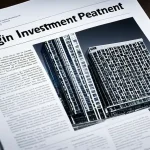Overview of UK Banking Regulations Relevant to Property Investment
Understanding UK banking regulations is essential for anyone engaged in property investment. These regulations establish the framework in which financial institutions operate, ensuring transparency, stability, and consumer protection in lending activities. They specifically influence how mortgages are issued and monitored, directly impacting property investors.
Key regulatory bodies play vital roles in maintaining this environment. The Financial Conduct Authority (FCA) oversees fair treatment of consumers, enforcing standards on mortgage rules and lending criteria. The Prudential Regulation Authority (PRA), part of the Bank of England, focuses on the financial soundness of lenders, ensuring they have sufficient capital to manage risks associated with property investment. Meanwhile, the Bank of England provides monetary policy direction, influencing interest rates that affect mortgage affordability.
Have you seen this : How Might Emerging Trends Impact UK Property Investment Strategies?
Core UK banking regulations governing property investment include strict lending criteria such as affordability assessments, creditworthiness checks, and limits on loan-to-value ratios. These rules are designed to prevent excessive borrowing and market instability. Together, these regulations and bodies create a structured environment where both lenders and borrowers engage with a clear understanding of their rights and responsibilities, fostering safer and more sustainable property investment practices.
Impact of Mortgage Rules and Lending Criteria on Property Investment
Mortgage lending regulations profoundly affect property investment strategies. Affordability assessments and stress testing have become more stringent, ensuring investors can withstand interest rate fluctuations without defaulting. These checks evaluate an applicant’s income against potential mortgage payments, adding a layer of prudence to lending decisions.
Additional reading : What are the key financial considerations when investing in UK property?
Recent changes to buy-to-let mortgages have tightened eligibility, often requiring higher rental income coverage ratios and more rigorous income verification compared to residential mortgages. This shift affects investment potential by limiting access for some buyers while encouraging financially robust portfolios.
Loan-to-value (LTV) ratios are a crucial factor: lower maximum LTVs demand larger deposits, impacting cash flow and overall investment scale. Similarly, increased income requirements reduce borrowing capacity, making small-scale investors carefully evaluate their financing options.
Understanding these mortgage lending criteria helps investors plan their property acquisitions realistically, balancing risk and reward. This structured approach can prevent over-leveraging and promote sustainable property investment growth, key to thriving in today’s evolving market.
Regulatory Changes and Their Effects on Investment Strategy
Navigating regulatory changes is crucial for successful property investment strategies. New rules often impact financing options, rental practices, and property development guidelines, directly influencing investor decisions. For example, increased capital gains tax rates or stricter lending criteria can restrict borrowing capacity, prompting investors to adjust their portfolio allocations or investment timelines.
Understanding these changes is essential for effective risk assessment. Regulatory shifts may introduce compliance costs or constrain certain market activities. Proactive investors monitor updates closely to anticipate potential pitfalls and update their strategies accordingly. This might include diversifying investments across jurisdictions or asset types to mitigate risks arising from policy variability.
Compliance goes beyond legality; it safeguards reputation and profitability. Failing to align with evolving regulations can result in fines or legal disputes, eroding investment returns. Thus, integrating compliance into the strategic framework ensures sustainability and long-term growth.
Investment strategies that factor in regulatory evolution tend to be more resilient. By continuously reviewing the legal landscape and adapting plans, property investors can optimize performance while minimizing exposure to unforeseen regulatory disruptions. Robust compliance and thorough risk assessment establish a solid foundation for thriving in complex property markets.
Accessibility of Loans and Financing for Investors
Understanding the financial landscape
Investor access to loans is strongly influenced by evolving regulations and borrowing conditions. UK banking rules impose strict eligibility criteria, often requiring substantial proof of income and a solid credit history. This ensures lenders mitigate risk but can limit opportunities, particularly for new or small-scale property investors.
Borrowing conditions such as loan-to-value ratios and interest rates directly affect how much capital investors can access. For instance, higher deposit requirements constrain some buyers, while experienced investors might benefit from more favorable terms due to established creditworthiness.
Current regulations are a double-edged sword. On one hand, they protect the market’s stability; on the other, they can restrict investor flexibility. Barriers like additional checks and documentation discourage casual or less financially-established investors. Conversely, these measures create opportunities for those who are prepared and knowledgeable, as they encourage responsible lending and borrowing.
Overall, these factors collectively shape the UK property investment landscape by balancing risk management with capital availability. Understanding these nuances helps investors navigate the complexities of financing and plan acquisitions more strategically.
Real-World Examples and Case Studies
Exploring practical examples reveals how property investors in the UK adapt to varying regulations. One investor faced challenges after new leasehold rules shifted financing requirements. This case study highlights the importance of understanding regulatory impact early to avoid costly delays. Conversely, another case shows success where an investor leveraged updated building standards to enhance property value, demonstrating how compliance can be an asset rather than a hurdle.
In these real-world scenarios, the UK property market’s dynamic nature means regulations are not static; staying informed is critical. Challenges often arise from misinterpreting leasehold changes or planning permission adjustments, which can stall developments. However, investors who approach these regulations proactively tend to achieve smoother project delivery and better financial outcomes.
Lessons learned emphasize thorough due diligence and engaging with legal experts at early stages. New investors should note that regulatory frameworks can vary significantly by region, affecting feasibility and profitability. Experienced investors, meanwhile, benefit from revisiting compliance strategies to optimize their portfolios amid changing rules.
Understanding both the hurdles and opportunities within regulatory landscapes equips property investors with a strategic advantage in the competitive UK property market.
How Robot Hoovers Enhance Daily Cleaning Routines
Robot hoovers bring remarkable convenience to everyday cleaning by automating vacuum tasks. Their ability to operate autonomously means you can maintain spotless floors without constantly handling the vacuum. Many models come with smart programming, allowing scheduling to fit seamlessly into busy lifestyles. This hands-off scheduling ensures cleaning happens even when you’re away, freeing up time while preserving cleanliness.
With intelligent sensors and mapping technology, robot hoovers navigate around furniture and obstacles efficiently. Their compact design enables access to tight spots often missed by traditional vacuums, ensuring a more thorough clean. Furthermore, modern robot hoovers frequently include multi-surface capabilities, adapting suction power for carpets, hardwood, or tiles, which enhances overall performance.
Maintenance is straightforward, typically involving easy-to-empty dustbins and washable filters. This user-friendly upkeep encourages consistent use, reinforcing the benefits of a cleaner living space with minimal effort. Overall, robot hoovers represent a practical solution for those seeking efficient, regular floor care without the hassle of manual vacuuming. Their blend of smart features and user-centric design supports a cleaner home with less time and energy expended.


